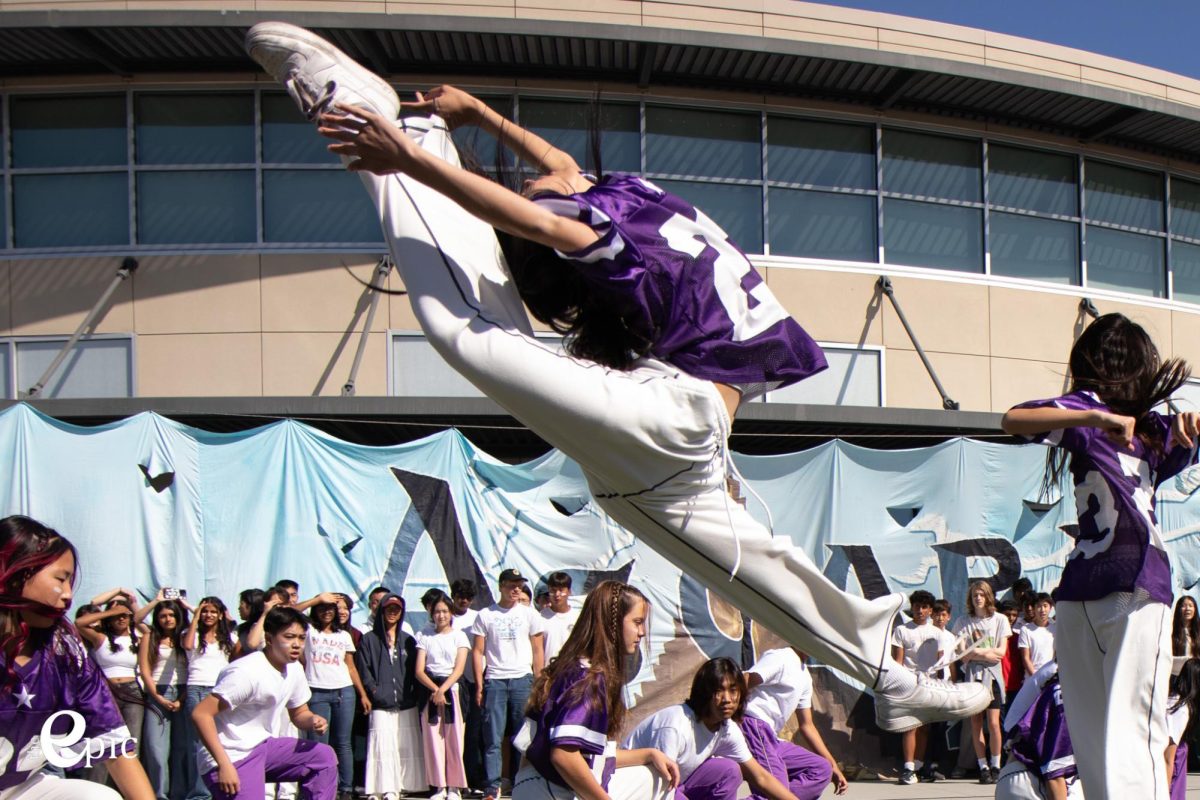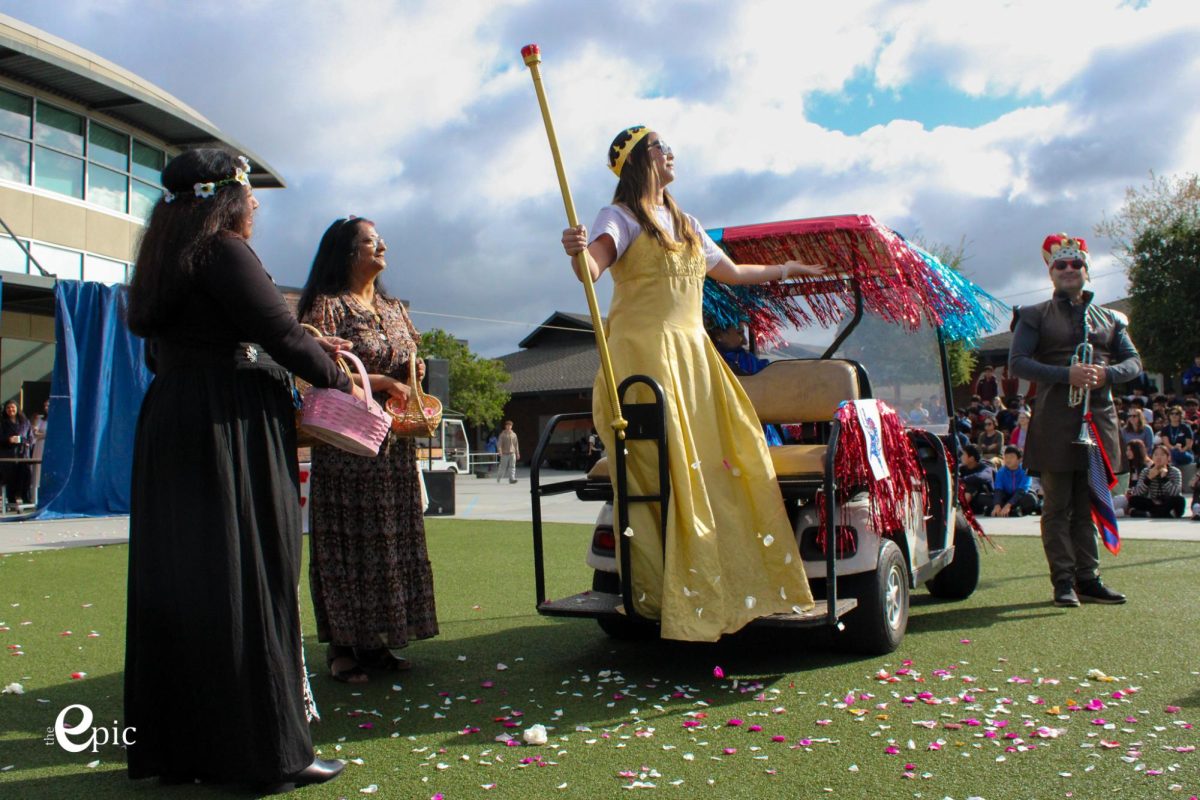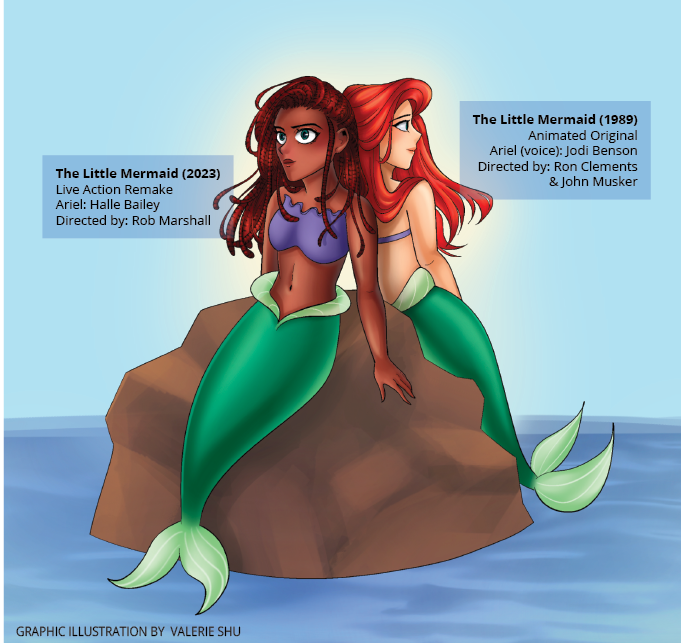Race swapping is more than a marketing strategy
Graphic illustration by Valerie Shu
An example of ‘race-swapping’ in the new live-action remake of Ariel starring the African American actor Halle Bailey as Ariel, compared to the original debut Disney film, which portrayed Ariel as caucasian.
December 12, 2022
Some modern interpretations of pre-existing movie franchises switch ethnicities of characters, sparking debate about how justified race swapping is, an increasingly common trend in Hollywood. Although some speculate that media corporations deliberately try to force diversity into casts to appeal to liberal consumers, race swapping is not inherently harmful when the ethnicity of an actor is consistent with the historical or cultural context of the story.
When casting an actor, ethnicity should not be a factor unless the character’s storyline includes an ethnicity’s culture, religion or language. In some cases, a person of color is casted as an originally white character because they simply embody the character holistically better than the other actors who auditioned for the role. Conversely, if the context of the movie incorporates specific cultural or religious elements, it would not be appropriate to swap the ethnicity of the character. For example, the cast of the live action film, “The Little Mermaid,” features Halle Bailey, an African American actress, as Ariel, whose well-known depiction in the 1989 animated film featured her originally as a caucasian mermaid. Some have argued that casting a Black woman as Ariel ruins the movie since Bailey misrepresents the animated movie , and that media corporations are forcing diversity to carry out their own agendas. These arguments fail to understand that the film is a completely fictional story, that writers imagined and outlined the rules of a fictional world, where changing the race of Ariel does not alter the story.
Furthermore, upon release of the trailer, there was an internet trend of parents recording their Black children’s reactions to Bailey starring in the movie, showing them excited seeing a part of themselves in the main character. In the cases where casting a person of color is deliberate, it is not harmful as it further diversifies the film industry, allowing people of color to gain more representation and positive influence. Diversity is important as it represents the social makeup of real life.
Even if media corporations artificially add diversity as a marketing strategy, there is no denying that children seeing a Disney princess of color encourages them to appreciate diversity.
The notion that race swapping does not do people of color justice in addressing ethnic setbacks stereotypes people of color to specific tropes in shows. In “Black Panther: Wakanda Forever,” Namor, an underwater King of a Mesoamerican society, is played by Tenoch Huerta, a Mexican actor. Latinos raised concerns that Marvel casts only dark-skin Latinos with Indigenous features, such as Huerta. However, others argue that it’s good that Latinos with dark skin are not limited to portraying villainous roles, and that casting a light-skin Latino wouldn’t be appropriate given that Namor is Mesoamerican.
There are also a limited number of movies that feature a person of color where the story is not surrounded by the setbacks of their ethnicity; a character of color should not be limited to these types of misrepresentative stories.
“Every time I see an Indian dude in a TV show they usually have the strongest Indian accent of all time with names like Raj,” sophomore Sagar Bhatia said. “I think people of color within movies should be seen and treated as normal people, without exaggeration and misinterpretation of their ethnic background.”
Diverse story tropes, including people of color, shows that they are more than just their stereotypes that come with their race, sexual orientation or any other aspect of themselves. Recent casting choices such as starring Bailey as Ariel or Mindy Kaling, an Indian American actress, as Velma in Scooby Doo, normalizes people of color being featured in ordinary movies and pushes for more inclusivity in peoples’ everyday lives.



































































JC • Jun 27, 2023 at 2:13 pm
So it’s great that it shows happy little black kids but what about white kids. If you think black kids need to see themselves represented don’t white kids. I don’t believe that. I’m white and one of my favorite characters was black panther. Also I would argue that all the race bent movies have bonb3d horribly lately. Is that still good for minorities. One could say that in lieu of the bad box offices sales it’s a bad business decision to represent minorities since it chases away the white audience which is the 70% of the population in the USA. Movies can’t succeed when they cater only to minorities apparently. The reality is they are making terrible movies and putting minorities in the movie so they have an excuse when the movie does poorly. “ITS ALL THE RACISTS/TROLLS” That’s why the movie failed. Not because I was promoted because of my skincolor and don’t have the skills necessary to make a blockbuster. Or I was forced to make a movie with characters chosen because of skin color not talent. Pick your poison. Either way the current box officefailure and lack of viewership of little mermaid/elemental/Peter pan pan/Transformers/lightyear/Eternals/flash….I could go on forever……when you prioritize race and DEI messaging over making a good movie these last couple of years in sucky movies is what we get.